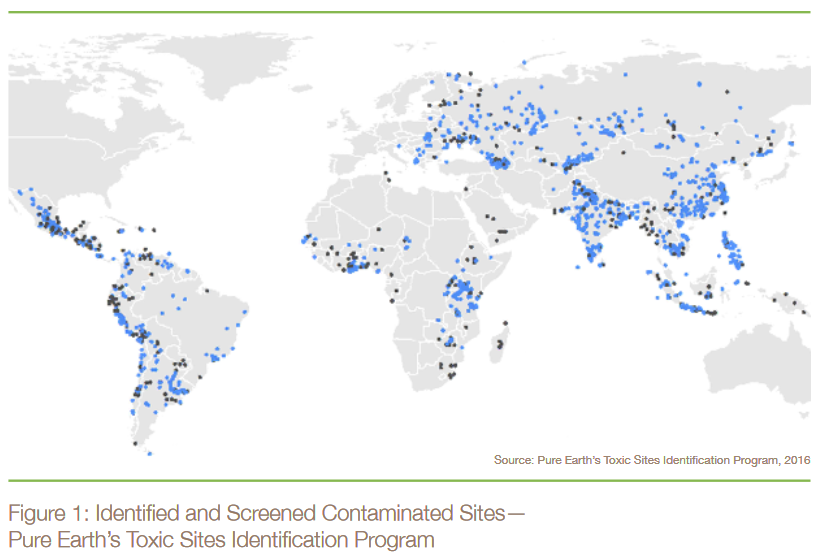I can’t say I totally believe this, particularly when it comes to battery recycling, but I do agree that tanneries should be way up near the top of the list.
Unfortunately, yearly reports on the world’s most polluting industries and locations from Pure Earth, formerly known as the Blacksmith Institute, stopped in 2016 :-( https://en.wikipedia.org/wiki/Pure_Earth
However, yearly reports to that date are archived at http://worstpolluted.org/
The mosty recent report, The World’s Worst Pollution Problems 2016. http://worstpolluted.org/docs/WorldsWorst2016Spreads.pdf
See report for details of how each industry shortens life expectancy.
The Toxics Beneath Our Feet presents an update of the top ten polluting industries based on each source’s global burden of disease. The worst ten industries are identified as:
- 1. used lead acid battery (ULAB) recycling
- 2. mining and ore processing
- 3. tanneries
- 4. dumpsites
- 5. industrial estates
- 6. smelting
- 7. artisanal small-scale gold mining (ASGM)
- 8. product manufacturing
- 9 chemical manufacturing
- 10 dye industry.
These industries collectively put over 32 million people at risk and account for 7 million to 17 million Disability-Adjusted Life Years (DALYs).
Or to put it another way, they are equivalent to reducing the life expenctancy of 7 to 10 million people by a year.
The number of toxic sites identified and recorded has continued to increase and an extrapolation from this suggests that there are perhaps 150,000 sites in the approximately 50 countries where investigations are underway.
the World Health Organization reports that an estimated 23 percent of all deaths in 2012, representing 12.6 million people, and 26 percent of deaths in children under age five were attributable to environmental risk factors, including pollution. Approximately one-fifth of the global cancer incidence is associated with environmental exposures.

Battery recycling contributes to more than 150 sites in the Pure Earth database, potentially putting almost 1.9 million people at risk. Geographically, the largest numbers of polluted sites are in Southeast Asia, with Africa, Central and South America also contributing a substantial amount. In addition, it is known that battery recycling is also a significant industry in South Asia and China as well.
Other industries have been identified as major sources of contamination outside of the top ten pollution sources. Petrochemical processing, electronic waste recycling, heavy industry, pesticide manufacturing and uranium processing.